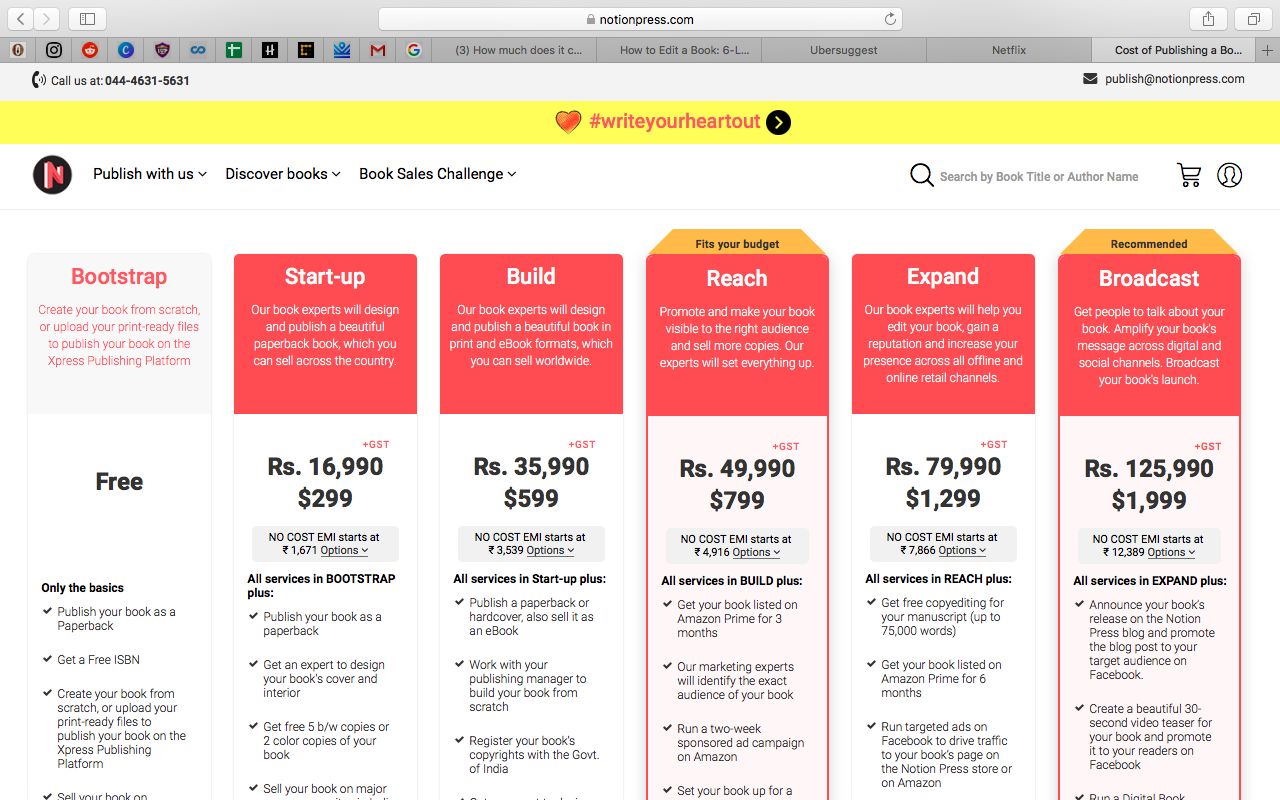Introduction
Welcome to the world of options trading! Whether you are new to investing or have experience in the stock market, options trading offers a unique and exciting opportunity to maximize returns and manage risk. In this comprehensive guide, we will take you on a journey to explore the ins and outs of options trading, providing you with the knowledge and skills you need to succeed.
Options trading is a financial strategy that involves buying and selling contracts that give traders the right, but not the obligation, to buy or sell an underlying asset at a predetermined price within a specified time frame. This versatile form of trading can be used to profit from both rising and falling markets, making it an attractive option for investors looking for opportunities in any market condition.
There are numerous benefits to options trading that set it apart from traditional investing methods. One key advantage is the leverage it provides. By investing a fraction of the capital required to purchase the underlying asset, traders can control a larger position and potentially generate higher returns. Additionally, options trading allows for flexibility and customization, as traders can choose from a wide range of strategies to suit their goals and risk tolerance.
In this guide, we will start by demystifying the two primary types of options: call options and put options. We will explain how these contracts work and the factors that impact their value. Understanding these basics is essential for building a strong foundation in options trading and making informed investment decisions.
Once you grasp the fundamentals, we will delve into various option strategies suitable for beginners. These strategies, such as covered calls and protective puts, offer ways to generate income and protect against potential losses. We will provide step-by-step instructions and real-life examples to help you grasp the concepts and implement them effectively in your trading.
Timing is crucial in options trading, and we will guide you on how to determine the right time to enter and exit trades. We will explore technical and fundamental analysis techniques, as well as key indicators, that can help identify favorable trading opportunities.
To excel in options trading, it is essential to develop a disciplined and strategic approach. We will share valuable tips and best practices to enhance your chances of success. From managing risk to setting realistic goals, these insights will help you navigate the often unpredictable nature of the market.
Lastly, we will highlight common mistakes that traders can make and provide practical advice on how to avoid them. By learning from others’ missteps, you can sidestep pitfalls and save valuable time and resources.
Get ready to embark on an exciting journey into the world of options trading. By the end of this guide, you will have the knowledge and confidence to start your own trading journey, opening up new opportunities for financial growth and freedom.
What is Options Trading?
Options trading is a financial strategy that allows investors to buy and sell contracts, known as options, which give them the right, but not the obligation, to buy or sell an underlying asset at a specific price within a predetermined time period. These underlying assets can include stocks, commodities, currencies, or indices.
When engaging in options trading, there are two primary types of options to consider: call options and put options. A call option gives the holder the right to buy the underlying asset at a specified price, known as the strike price, before the expiration date. On the other hand, a put option grants the holder the right to sell the underlying asset at the strike price within the given timeframe.
Options trading offers investors a plethora of benefits. One main advantage is the potential for higher returns compared to traditional stock trading. With options, investors can leverage their positions, meaning they can control a larger amount of the underlying asset with a smaller investment. This amplifies the profit potential while managing risk.
Another benefit of options trading is the flexibility it provides. Options contracts come with different strike prices and expiration dates, allowing traders to customize their strategies to suit their objectives. Whether you want to speculate on short-term price movements or protect your existing investments against potential downturns, options offer a range of versatile strategies to match your needs.
Options trading also offers the advantage of limited risk. When purchasing options contracts, the most you can lose is the premium paid for the contract. This risk management feature makes options a popular choice for conservative investors who want to protect their capital.
It’s important to note that options trading involves some degree of complexity and may not be suitable for all investors. Understanding the terminology, concepts, and potential risks associated with options is crucial before diving into the market. Performing thorough research, educating yourself, and seeking the guidance of experienced professionals can significantly increase your chances of success in options trading.
In the next sections of this guide, we will explore in more detail the mechanics of call and put options, the basics of options trading, various strategies suitable for beginners, and crucial tips for successful options trading. By gaining a comprehensive understanding of options and how to navigate the market, you will be equipped to capitalize on the potential profit opportunities while managing risk effectively.
Benefits of Options Trading
Options trading offers a plethora of benefits for investors looking to diversify their portfolios and maximize their returns. From potential higher profits to risk management capabilities, here are the key advantages of engaging in options trading:
1. Leverage: One of the significant advantages of options trading is the ability to control a larger position with a relatively small investment. By purchasing options contracts, investors can gain exposure to the price movement of the underlying asset at a fraction of the cost of buying the asset outright. This leverage can amplify profits if the trade goes in your favor.
2. Flexibility: Options provide investors with a range of strategies to suit their specific trading objectives and risk tolerance. Whether you want to speculate on short-term price movements, generate income from existing holdings, or protect your portfolio against potential downturns, options offer a variety of customizable strategies to match your needs.
3. Diversification: Options trading allows investors to diversify their portfolios beyond traditional stock investments. With options, you can trade on various underlying assets, including stocks, commodities, currencies, and indices. This diversification can help spread risk and capture opportunities in different markets.
4. Limited Risk: When purchasing options contracts, the maximum potential loss is limited to the premium paid for the contract. This risk management feature provides a level of protection for investors. In contrast, trading stocks or other assets outright can result in substantial losses if the price of the asset declines significantly.
5. Potential for Higher Returns: Due to the leverage options offer, traders can potentially generate higher returns compared to traditional stock trading. Profits can be realized both in rising and falling markets, giving investors more opportunities to capitalize on market movements.
6. Hedging and Risk Mitigation: Options can be used as a risk management tool to protect existing investments against potential downside movements. By purchasing put options, investors can offset losses in their stock holdings if the market experiences a decline. This hedging capability can provide peace of mind and stability in uncertain market conditions.
7. Lower Capital Requirements: Compared to buying the underlying asset, options trading requires a smaller initial investment. This makes options accessible to a broader range of investors with varying capital sizes, allowing them to participate in the market and potentially generate profits.
Options trading is not without risks, and it is crucial to fully understand the mechanics and potential downsides before engaging in this strategy. However, when used wisely and with proper risk management, options trading can be a valuable addition to an investor’s financial toolkit, offering opportunities for higher profits, diversification, and risk mitigation.
Understanding Call Options
A call option is a type of options contract that gives the holder the right, but not the obligation, to buy an underlying asset at a specified price, known as the strike price, before the expiration date. This allows investors to profit from an anticipated increase in the price of the underlying asset.
Let’s break down the key components of a call option:
1. Holder: The holder, also known as the buyer or owner of the call option, has the right to exercise the option by buying the underlying asset at the strike price before the expiration date.
2. Writer: The writer, also called the seller or issuer of the call option, is the entity that sells the call option to the holder. The writer is obligated to sell the underlying asset to the holder if the option is exercised.
3. Strike Price: The strike price is the predetermined price at which the holder can buy the underlying asset if they choose to exercise the call option. It is specified in the options contract and remains fixed throughout the option’s life.
4. Expiration Date: The expiration date is the date on which the call option contract expires. After this date, the option is no longer valid, and the right to buy the underlying asset at the strike price ceases to exist.
5. Premium: The premium is the price that the buyer pays to the seller for the call option. This is determined by various factors, including the current price of the underlying asset, volatility, time to expiration, and interest rates.
When the price of the underlying asset rises above the strike price before the expiration date, the call option becomes “in the money.” In this scenario, the holder can exercise the option and buy the asset at a lower price than its current market value, allowing them to make a profit. However, if the price of the underlying asset remains below the strike price or falls further, the call option is considered “out of the money,” and it is generally not advantageous to exercise the option.
Call options provide investors with opportunities for leveraged profits. By investing a smaller amount upfront in the premium, the investor can control a larger position in the underlying asset. If the price of the underlying asset increases significantly, the profit potential for the call option holder is magnified.
It’s important to note that call options come with risks. If the price of the underlying asset does not rise above the strike price before the expiration date, the call option may expire worthless, resulting in the loss of the premium paid.
Understanding call options and how they work is essential for options traders. By grasping the concept of call options and considering various factors such as strike price, expiration date, and premium, investors can make informed decisions when buying or selling call options, increasing their chances of success in the options market.
Understanding Put Options
Put options are a type of options contract that give the holder the right, but not the obligation, to sell an underlying asset at a specific price, known as the strike price, before the expiration date. Put options enable investors to profit from an anticipated decrease in the price of the underlying asset.
Let’s break down the key components of a put option:
1. Holder: The holder, also known as the buyer or owner of the put option, has the right to exercise the option by selling the underlying asset at the strike price before the expiration date.
2. Writer: The writer, also called the seller or issuer of the put option, is the entity that sells the put option to the holder. The writer is obligated to buy the underlying asset from the holder if the option is exercised.
3. Strike Price: The strike price is the predetermined price at which the holder can sell the underlying asset if they choose to exercise the put option. It is specified in the options contract and remains fixed throughout the option’s life.
4. Expiration Date: The expiration date is the date on which the put option contract expires. After this date, the option is no longer valid, and the right to sell the underlying asset at the strike price ceases to exist.
5. Premium: The premium is the price that the buyer pays to the seller for the put option. This is determined by various factors, including the current price of the underlying asset, volatility, time to expiration, and interest rates.
When the price of the underlying asset decreases below the strike price before the expiration date, the put option becomes “in the money.” In this scenario, the holder can exercise the put option and sell the asset at a higher price than its current market value, allowing them to make a profit. Conversely, if the price of the underlying asset remains above the strike price or increases further, the put option is considered “out of the money,” and it is typically not advantageous to exercise the option.
Put options provide investors with opportunities for hedging and profit potential. By purchasing put options, investors can protect their existing investments against potential downside movements in the market. If the price of the underlying asset declines significantly, the put option holder can sell the asset at the strike price, mitigating their losses.
Similar to call options, put options come with risks. If the price of the underlying asset does not fall below the strike price before the expiration date, the put option may expire worthless, resulting in the loss of the premium paid.
To effectively utilize put options, investors must understand how they work and consider factors such as strike price, expiration date, and premium. By having a solid grasp of put options, investors can make more informed decisions when buying or selling put options, enhancing their chances of success in the options market.
The Basics of Options Trading
Options trading can be an exciting and profitable venture for investors. To get started, it’s important to understand the basics of options trading and the key elements involved:
1. Options Contracts: Options are financial contracts that give the holder the right, but not the obligation, to buy or sell an underlying asset at a predetermined price within a specified time period. Each options contract represents a specific quantity of the underlying asset.
2. Call Options and Put Options: There are two primary types of options: call options and put options. A call option gives the holder the right to buy an underlying asset, while a put option gives the holder the right to sell an underlying asset.
3. Strike Price: The strike price is the predetermined price at which the holder of an option can buy or sell the underlying asset. It is specified in the options contract and remains fixed throughout the option’s life.
4. Expiration Date: Every options contract has an expiration date that determines when the option can be exercised. After the expiration date, the option becomes invalid, and the right to buy or sell the underlying asset ceases to exist.
5. Premium: The premium is the price that the buyer pays to the seller for the option contract. The premium is influenced by various factors, including the current price of the underlying asset, volatility, time to expiration, and interest rates.
6. In-the-Money, At-the-Money, and Out-of-the-Money: Depending on the relationship between the strike price and the current price of the underlying asset, options can be categorized as in-the-money, at-the-money, or out-of-the-money. In-the-money options have intrinsic value, while at-the-money and out-of-the-money options have no intrinsic value.
7. Exercise and Assignment: When the holder of an option chooses to buy or sell the underlying asset, they are said to be exercising the option. If the option is exercised, the counterparty who sold the option may be assigned the obligation to fulfill the contract.
Options trading provides traders with various strategies to capitalize on market opportunities and manage risk. Whether it’s speculating on the price movement of an asset, hedging existing investments, or generating income through covered calls, options offer versatility and flexibility.
It’s important to note that options trading involves risks, and it requires a thorough understanding of the market. Traders should take time to educate themselves, conduct research, and develop a trading plan that aligns with their goals and risk tolerance.
By grasping the basics of options trading, including options contracts, call and put options, strike prices, expiration dates, premiums, and the nuances of in-the-money, at-the-money, and out-of-the-money options, investors can lay a solid foundation for their options trading journey. As with any form of investing, practice, experience, and continuous learning are key to success in options trading.
Option Strategies for Beginners
Option strategies offer beginners an array of techniques to navigate the options market effectively. These strategies can help manage risk, generate income, and maximize returns. Here are some popular option strategies for beginners:
1. Covered Call: This strategy involves owning the underlying asset and selling a call option against it. By selling a call option, you receive a premium, which helps offset potential losses if the price of the asset decreases. If the price remains below the strike price, the option expires worthless, and you keep the premium.
2. Protective Put: This strategy involves buying a put option to protect existing stock holdings from potential downside moves. If the price of the stock declines, the put option increases in value, effectively reducing losses. It acts as insurance against a significant market downturn.
3. Long Call: With this strategy, you purchase a call option to speculate on the upward price movement of the underlying asset. If the price rises above the strike price, the call option becomes profitable, providing you with the potential for significant returns. However, if the price does not reach the strike price, the option may expire worthless.
4. Short Put: This strategy involves selling a put option with the expectation that the price of the underlying asset will remain above the strike price. If the option expires worthless, you keep the premium received. However, if the price falls below the strike price, you may be obligated to purchase the asset at a higher price.
5. Bull Call Spread: This strategy is used when you anticipate a modest increase in the price of the underlying asset. It involves buying a call option and simultaneously selling another call option with a higher strike price. The premium received from selling the second call option helps offset the cost of buying the first one.
6. Bear Put Spread: This strategy is employed when you expect the price of the underlying asset to decrease moderately. It involves buying a put option and simultaneously selling another put option with a lower strike price. The premium received from selling the second put option helps reduce the cost of buying the first one.
7. Straddle: The straddle strategy is used when you anticipate high volatility and are unsure about the direction of the price movement. It involves buying both a call option and a put option with the same strike price and expiration date. Profits are made if the price moves significantly in either direction, while limited losses occur if the price remains relatively stable.
These are just a few option strategies available to beginners. Each strategy has its own risk and reward profile, and it’s important to thoroughly understand the mechanics and potential outcomes before implementing them. Additionally, practicing with virtual trading platforms or seeking guidance from experienced professionals can provide valuable insights and enhance your understanding of these strategies.
As a beginner, it’s crucial to start with simpler strategies and gradually expand your knowledge and experience. With time and practice, you can build a robust options trading skill set and become more proficient in implementing advanced strategies.
Determining the Right Time to Trade Options
Timing is crucial in options trading. Knowing when to enter and exit trades can significantly impact your profitability. While there is no foolproof method for timing the market, there are key factors to consider when determining the right time to trade options:
1. Market Analysis: Conducting thorough market analysis is essential before making any trading decisions. Analyze the overall market conditions, as well as the specific sector or asset you are interested in. Consider factors such as economic indicators, geopolitical events, and company earnings reports that may impact the price movement of the underlying asset.
2. Technical Analysis: Utilize technical analysis tools and indicators to identify potential entry and exit points. Chart patterns, trendlines, moving averages, and oscillators can help determine the direction and strength of price movements.
3. Options Implied Volatility: Implied volatility is a measure of the market’s expectation of future price fluctuations. Higher implied volatility generally leads to higher options premiums. Consider the current level of implied volatility in the options market to determine if it is advantageous for trading options.
4. Time Decay: Options contracts have limited lifespans, and their value diminishes over time, mainly due to time decay. It’s important to factor in the time decay component when deciding when to enter or exit a trade. Exiting a trade too close to expiration may result in a significant loss of value, whereas entering too early may expose you to unnecessary risk.
5. Risk-Reward Ratio: Assess the potential risk and reward of each trade. Evaluate the potential profit against the potential loss and determine if the risk-reward ratio aligns with your trading strategy and risk tolerance. Consider setting a target profit and maximum acceptable loss for each trade and adhere to your predetermined plan.
6. Liquidity: Pay attention to the liquidity of the options contracts you are considering. Higher liquidity ensures smoother order execution and tighter bid-ask spreads. Typically, more liquid options provide better trading opportunities.
7. Personal Financial Situation: Consider your own financial circumstances and trading goals. Ensure that you have sufficient capital and risk tolerance to engage in options trading. Avoid overexposing yourself to excessive risk, and always trade within your means.
It’s important to note that no single method or strategy guarantees success in timing the market. Develop a systematic approach to evaluating market conditions, conducting thorough analysis, and managing risks. Keep abreast of current events and market trends, constantly learning and adapting your strategies based on the changing market environment.
Practice and experience play a crucial role in mastering the art of timing in options trading. Consider starting with smaller positions, utilizing virtual trading platforms, or engaging in paper trading to gain experience and fine-tune your timing skills.
By combining a well-rounded understanding of market analysis, technical indicators, volatility, time decay, risk-reward evaluation, liquidity, and personal financial situation, you can increase your chances of making informed trading decisions and optimizing your options trading strategy.
Tips for Successful Options Trading
Options trading can be a lucrative endeavor, but it requires knowledge, discipline, and a well-thought-out approach. Consider the following tips to improve your chances of success in options trading:
1. Educate Yourself: Take the time to thoroughly understand the fundamentals of options trading. Study the terminology, learn about different strategies, and familiarize yourself with the factors that affect options pricing. Continuous learning is crucial to staying ahead in the dynamic options market.
2. Start with Simpler Strategies: As a beginner, it’s advisable to start with simpler options strategies. Focus on mastering a few strategies before venturing into more complex ones. This will help you build a solid foundation and gain confidence in your trading abilities.
3. Plan Your Trades: Develop a well-defined trading plan that includes entry and exit criteria, risk management guidelines, and profit targets. Stick to your plan and avoid impulsive trading decisions driven by emotions or short-term market fluctuations.
4. Manage Risk: Implement risk management techniques to protect your capital. This includes setting stop-loss orders, diversifying your portfolio, and not allocating an excessive portion of your capital to a single trade. Be mindful of the potential risks associated with options trading and trade with an amount you can afford to lose.
5. Utilize Paper Trading: Consider utilizing virtual trading platforms or engaging in paper trading to practice your strategies without risking real money. This allows you to gain experience, test different approaches, and fine-tune your trading skills in a risk-free environment.
6. Stay Disciplined: Emotions can significantly impact trading decisions. Avoid succumbing to fear or greed and stick to your predetermined plan. Practice disciplined trading by following your strategies and avoiding impulsive actions.
7. Stay Informed: Stay updated with market news, economic events, and company announcements that may impact the price of the underlying assets. This information can help you make informed trading decisions and anticipate potential market movements.
8. Keep a Trading Journal: Maintain a journal to record your trades, including entry and exit points, reasons for the trade, and lessons learned. Reviewing your journal regularly will help you identify patterns, strengths, and areas for improvement in your trading strategy.
9. Seek Professional Guidance: Consider seeking guidance from experienced options traders or consulting with financial advisors who specialize in options trading. Their insights and expertise can provide valuable perspectives and help you navigate the complexities of the market.
10. Practice Patience: Options trading takes time and patience to be consistently successful. Avoid the temptation to make frequent trades or chase quick profits. Maintain a long-term view and focus on sustainable profitability rather than short-term gains.
Successful options trading requires a combination of knowledge, discipline, and experience. By continually learning, planning your trades, managing risk, staying informed, and practicing patience and discipline, you can enhance your chances of achieving success in the dynamic and potentially rewarding world of options trading.
Common Mistakes to Avoid in Options Trading
Options trading can be a lucrative investment strategy, but it’s important to be aware of the potential pitfalls. Avoiding common mistakes can help protect your capital and improve your chances of success. Here are some key mistakes to avoid in options trading:
1. Lack of Education: One of the biggest mistakes is diving into options trading without a solid understanding of the underlying principles. Take the time to educate yourself about options, strategies, and risk management to make informed trading decisions.
2. Neglecting Risk Management: Failing to implement proper risk management techniques is a common mistake that can lead to significant losses. Set stop-loss orders, diversify your options positions, and only risk a small portion of your capital on each trade.
3. Over-Trading: Constantly entering and exiting trades based on impulsive decisions or short-term market movements can be detrimental to your overall performance. Stick to your trading plan and avoid over-trading, as it can lead to unnecessary transaction costs and reduced focus on quality trades.
4. Ignoring Liquidity: Trading illiquid options can result in wider bid-ask spreads, making it difficult to enter and exit positions at desirable prices. Avoid options with low trading volume and focus on liquid options to ensure smoother execution and fair pricing.
5. Chasing Out-of-the-Money Options: It can be tempting to purchase cheap out-of-the-money options in the hopes of a significant gain. However, the probability of these options expiring worthless is high. Focus on options with a higher probability of success, even if they come with a higher premium.
6. Not Considering Time Decay: Time decay, or the erosion of the option’s value as it approaches expiration, is a crucial concept to understand. Avoid holding options too close to expiration, as the rate of time decay accelerates. Consider the time decay component when determining your trading timeline.
7. Emotional Trading: Allowing emotions such as fear, greed, or impatience to drive your trading decisions can lead to poor outcomes. Stick to your trading plan and avoid making impulsive decisions based on emotional impulses.
8. Failing to Adapt: Market conditions can change rapidly, and successful options traders need to adapt their strategies accordingly. Avoid sticking to outdated strategies that no longer align with the current market environment. Stay informed and be willing to adjust your approach as needed.
9. Not Recording and Analyzing Trades: Failing to keep a record of your trades and analyze the outcomes can hinder your progress as a trader. Without a trading journal, you may miss valuable insights and repeating patterns. Reviewing past trades can help you identify strengths and weaknesses in your strategy.
10. Overleveraging: Options allow for leverage, but excessive use of leverage can amplify losses. Avoid overleveraging your positions and only use leverage that aligns with your risk tolerance and trading plan.
Avoiding these common mistakes and being mindful of the risks associated with options trading can enhance your overall trading experience. Continuously educate yourself, develop a robust risk management system, stay disciplined, and adapt to changing market conditions. By doing so, you can optimize your performance and increase your chances of long-term success in the options market.
Conclusion
Options trading offers a world of opportunities for investors looking to diversify their portfolios, hedge their positions, and potentially generate higher returns. However, it is a complex and dynamic market that requires a solid understanding of the mechanics, strategies, and risk management techniques involved.
In this comprehensive guide, we have explored the fundamentals of options trading, including what options are, how they work, and the different types of options available. We have discussed the benefits of options trading, such as leverage, flexibility, and risk management capabilities. Understanding call options and put options has provided readers with insights into the mechanics of these essential components of options trading.
Moreover, we have highlighted option strategies suitable for beginners, such as covered calls, protective puts, long calls, and short puts. These strategies offer various techniques to manage risk, generate income, and speculate on market movements. We have also emphasized the importance of timing in options trading, discussing factors to consider when determining the right time to enter and exit trades.
Additionally, we have provided valuable tips for successful options trading, including the importance of education, planning trades, managing risk, staying informed, and practicing discipline. Avoiding common mistakes, such as lack of education, over-trading, emotional decision-making, and neglecting risk management, can significantly increase your chances of success in options trading.
As with any form of investment, there are risks involved in options trading, and it is essential to trade within your means and fully understand the potential downsides. Continuously learning and adapting your strategies to the ever-changing market conditions is key to navigating the options market successfully.
By following the guidance and advice provided in this guide, you can lay a solid foundation for your options trading journey. Constantly refine your knowledge, practice with paper trading or virtual platforms, seek guidance from experienced professionals, and remain disciplined in your approach. With time and experience, you can enhance your skills, optimize your trading strategies, and potentially reap the rewards that options trading has to offer.















![How to Gift a Kindle Book to Someone? [GUIDE]](https://robots.net/wp-content/uploads/2022/07/how-to-gift-a-kindle-book-featured-2-300x175.jpg)









